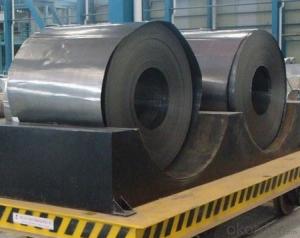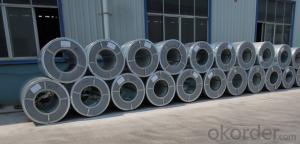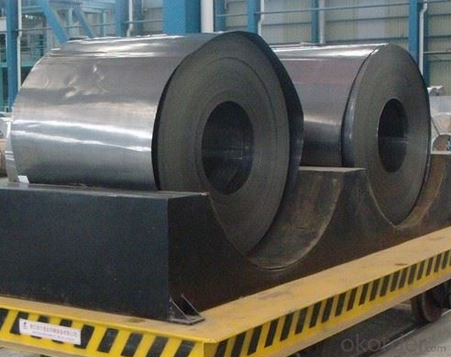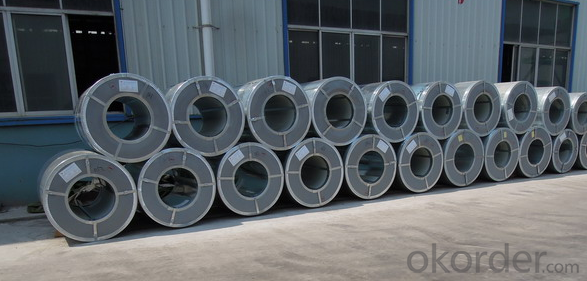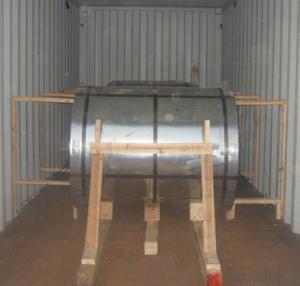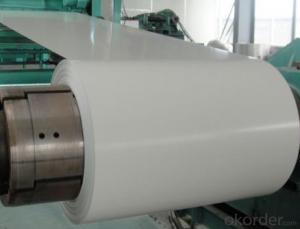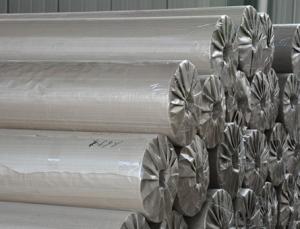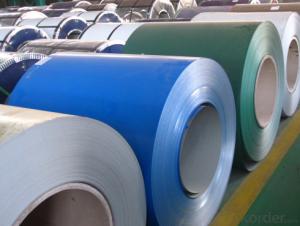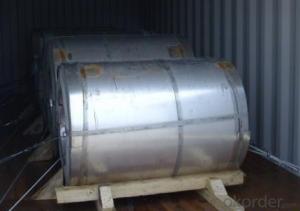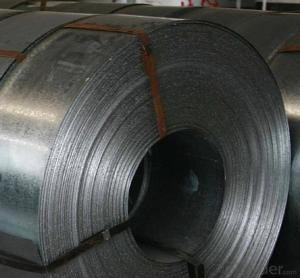Thickness: 0.15 - 2.0 mm
Technique: Hot Rolled
Application: Container Plate
Surface Treatment: Galvanized
Secondary Or Not: Non-secondary
Certification: CE
Special Pipe: Thick Wall Pipe
Alloy Or Not: Non-alloy
Section Shape: Other
Galvanized Steel Coil Hot Dipped BHS ASTM A653 CNBM
- Loading Port:
- Guangzhou
- Payment Terms:
- TT OR LC
- Min Order Qty:
- 20 m.t.
- Supply Capability:
- 3000 m.t./month
OKorder Service Pledge
Quality Product, Order Online Tracking, Timely Delivery
OKorder Financial Service
Credit Rating, Credit Services, Credit Purchasing
You Might Also Like
1.Quick Details:
2.Packaging & Delivery
| Packaging Details: | standard package |
|---|---|
| Delivery Detail: | 1-4 week |
cold rolled galvanizing steel coil
galvanized iron steel coil
| Product name | hot rolling galvanized steel coil |
| Raw material | SGCC, SPCC, DC51D, SGHC,A653 |
| Certificate | ISO9001,BV,SGS |
| Thickness | 0.13mm-2.0mm |
| Width | 1250mm or under |
| Tolerance | thickness+/-0.01mm |
| Surface treatment | galvanized steel sheets |
T Bending (top-coating) T Bending (back-coating) | ≤3T ≤4T |
| Anti-MEK Wiping | ≥100times |
| Zinc coating | 40-180g |
| Type of coating structure | 2/1 or 2/2 coating, or customized |
| Standard | GB/T12754-2006, GB/T9761-1988, GB/T9754-1988, GB/T6739-1996, HG/T3830-2006, HG/T3830-2006, GB/T1732-93, GB/T9286-1998, GB/T1771-1991, GB/T14522-93 |
| Color | Silver |
| Application | construction material for building industry ,structural use, roofing, commercial use ,household appliance,industry facilities,office buildings |
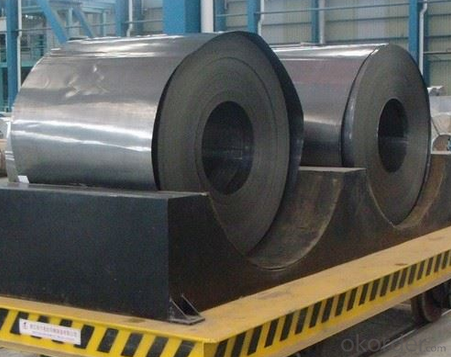
5.What is the application of Steel Coil?
There are two sides,one is out side: Workshop, agricultural warehouse, residential precast unit, corrugated roof, roller shutter door, rainwater drainage pipe, retailer booth;the other is inside: Door, doorcase, light steel roof structure, folding screen, elevator, stairway, vent gutter.
- Q: What are the quality control measures for steel coil production?
- Quality control measures for steel coil production are essential to ensure that the final product meets the required standards and specifications. Here are some key quality control measures commonly employed in the steel coil production process: 1. Raw Material Inspection: Before production starts, the raw materials such as steel billets are thoroughly inspected for their chemical composition, mechanical properties, and surface defects. This ensures that only high-quality materials are used in the production process. 2. Process Control: Throughout the production process, various process control measures are implemented to monitor and control critical parameters. These may include temperature control, rolling speed, tension control, and lubrication. Regular checks and adjustments are made to ensure that these parameters are within the specified tolerances. 3. Dimensional and Surface Inspection: Steel coils undergo rigorous dimensional and surface inspections to ensure that they meet the required thickness, width, and length specifications. Surface defects such as scratches, pits, or dents are also carefully examined and minimized to meet quality standards. 4. Mechanical Testing: Mechanical properties such as tensile strength, yield strength, elongation, and hardness are tested on a regular basis. These tests are crucial to ensure that the steel coils possess the desired strength and performance characteristics. 5. Visual Inspection: Visual inspection is an important quality control measure to identify any visible defects or irregularities in the steel coils. Trained inspectors check for issues like cracks, corrosion, or uneven surfaces, and take necessary actions to rectify or reject the faulty coils. 6. Non-Destructive Testing: Non-destructive testing methods like ultrasonic testing, magnetic particle testing, or eddy current testing are often employed to detect internal defects such as voids, inclusions, or discontinuities that may impact the quality of the steel coils. 7. Documentation and Traceability: Proper documentation and traceability of all quality control measures are maintained throughout the production process. This includes recording test results, inspection reports, and other relevant data to ensure transparency and accountability. 8. Continuous Improvement: Quality control measures in steel coil production are not static but subject to continuous improvement. Regular audits, feedback from customers, and analysis of process data are used to identify areas for improvement and implement corrective actions to enhance product quality. By implementing these quality control measures, steel coil manufacturers can ensure that the final product meets the required specifications, performs reliably, and achieves customer satisfaction.
- Q: what is the stucture of high carbon steel
- I dont know percentages just that it is basic steel with added carbon it is used for tooling and other reasons that need a steel that can be hardened ~~
- Q: Fallout 3 take it back quest?if i am in the rotunda and dont have broken steel installed yet so i cant leave if i instal it will i be able to continue the game even if im seconds away from the end without it Additional Detailsi know it continues on but im not sure if it will let me cause i got this far without it 1 objective away from finishing the quest idk if it will change that little bit so i can continue (ps3)already in the purifier place kill col. autum liek i said just gotta do the code thing to it idk if im to far for broken steel to effect this save file
- Yes. The Broken Steel add-on goes automatically where ever you are. The thing is, I would like stand around the control room for a little while until the Broken Steel add-on is completely downloaded (Basically pop A LOT of rad-x and radaway). You should see a pop-up message saying that Broken Steel is installed and the level cap is now at 30.
- Q: How are steel coils used in the manufacturing of automotive fenders?
- Steel coils are used in the manufacturing of automotive fenders by being shaped and formed into the desired fender design. The coils are cut and stamped into specific shapes, then undergo a series of bending, welding, and finishing processes to create the final fender product. The strength and durability of steel make it an ideal material for fenders, providing protection to the vehicle's wheels and body in case of collisions or impacts.
- Q: which is the most tough and durable steel type ??
- C'mon. Really? That's your question? How about some actual details like the application, is it going to be formed into a shape, do you need to weld it, what type of environment like corrosion and temperature is it going to be subject to? There are roughly 2,000 grades of steel and a couple hundred grades of stainless steel. Steels can be soft or they can be exceptionally hard. We need more info please.
- Q: What is the maximum weight capacity for a steel coil lifting device?
- The maximum weight capacity for a steel coil lifting device depends on various factors such as the design, size, and specifications of the specific lifting device. It is crucial to refer to the manufacturer's guidelines or consult with a qualified engineer to determine the exact weight capacity for a particular steel coil lifting device.
- Q: Which one would be stronger? And should damascus steel be tempered?Thank You
- it depends on so many factors first of all is it functional damascus steel or can you see the grain? what type of carbon steel is it generally most makers use1045- 1060 a good quote of something I read was asking what steel is best for a sword is like asking how long string should be generally if they say carbon steel and do not say what grade it is they mean 1045 meaning it has 4.5 carbon content now this if properly tempered can make a good sword but it would not be known for it's durability or it's edge retention it would be average at these things as for damascus steel well as I said before it is just any steel that has been folded some people think it has magical properties imparted by the folding process but it is just steel there is slightly a higher chance of a damascus steel sword having deposits of impurities along the blade and at cheaper blades this risk is even higher that being said many good swords made of damascus on the market are very good quality any sword no matter if it is made of damascus, carbon, spring. or tool steel should be tempered always no question about that
- Q: What are the common coil storage methods?
- The common coil storage methods include stacking coils vertically, using coil cradles or racks, and storing them horizontally on pallets or on the ground.
- Q: What is the use for spring steel that take advantage of its unique properties?
- *Spring steel is a low alloy, medium carbon steel with a very high yield strength. This allows objects made of spring steel to return to their original shape despite significant bending or twisting. Silicon is the key component to most spring steel alloys. An example of a spring steel used for cars would be AISI 9255 (DIN and UNI: 55Si7, AFNOR 55S7), containing 1.50%-1.80% silicon, 0.70%-1.00% manganese and 0.52%-0.60% carbon. Most spring steels (as used in cars) are hardened and tempered to about 45 Rockwell C. the most widely used spring steel is ASTM A228 (0.80–0.95% carbon), which is also known as music wire. Spring steel is one of the most popular materials used in the fabrication of lock picks due to its pliability and resilience.
Send your message to us
Galvanized Steel Coil Hot Dipped BHS ASTM A653 CNBM
- Loading Port:
- Guangzhou
- Payment Terms:
- TT OR LC
- Min Order Qty:
- 20 m.t.
- Supply Capability:
- 3000 m.t./month
OKorder Service Pledge
Quality Product, Order Online Tracking, Timely Delivery
OKorder Financial Service
Credit Rating, Credit Services, Credit Purchasing
Similar products
Hot products
Hot Searches
Related keywords
